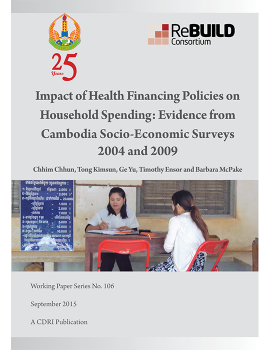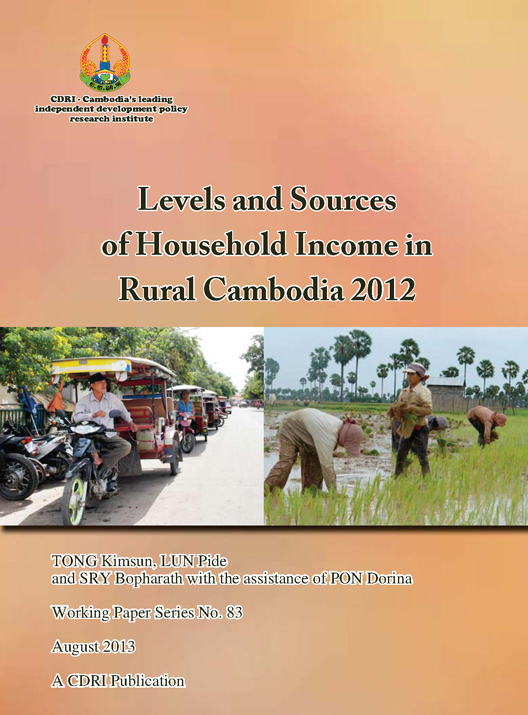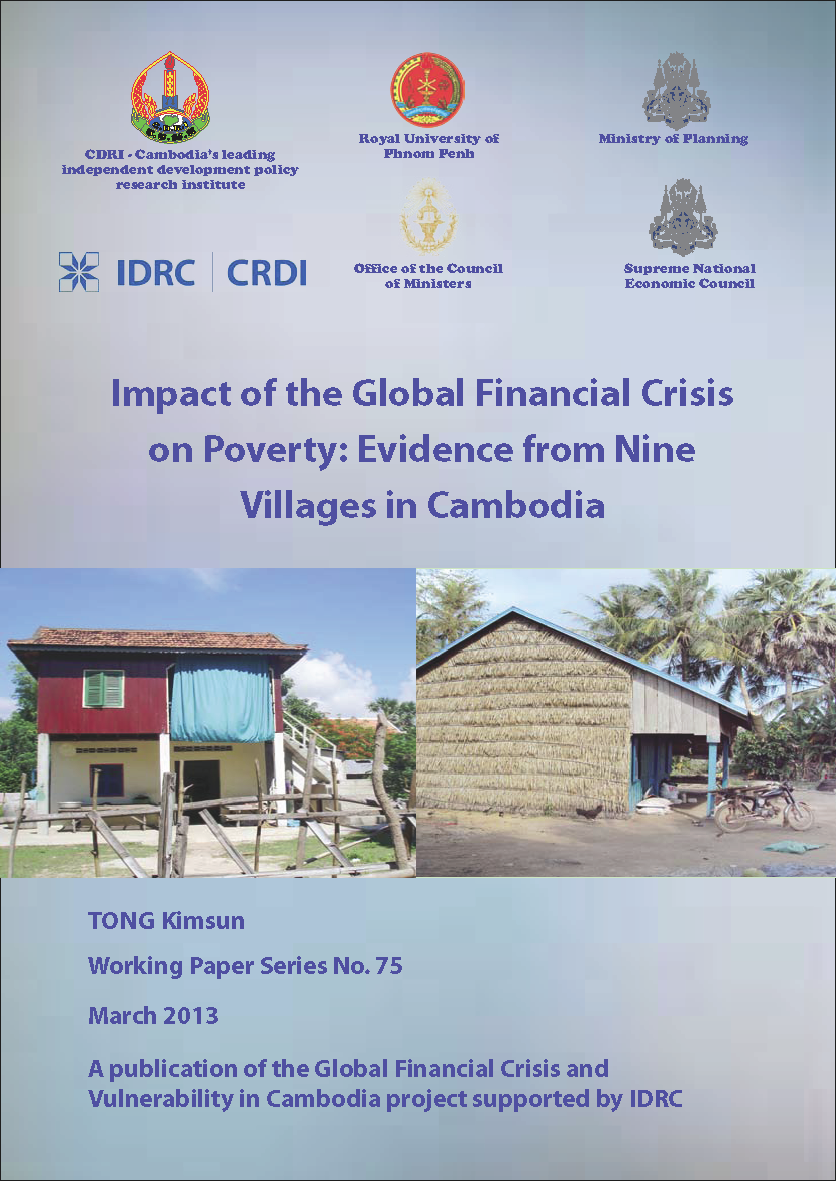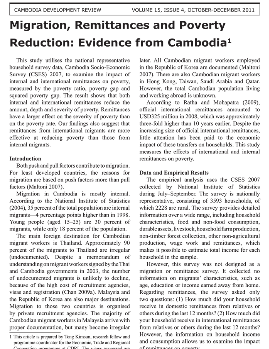Dr TONG Kimsun
Former Senior Research Fellow
Email : NA


We use the 2004 and 2009 Cambodia Socio-Economic Surveys to measure the impact of user fees, health equity funds, the government health subsidy scheme, vouchers and various combinations of these policies on household health spending. Employing a difference-indifferences estimator and a two-part model, we find that health equity funds and vouchers h...

This paper estimates the incidence and intensity of catastrophic health payments and their impoverishment effects and identifies the sources of catastrophic payments by using the nationally representative household survey, the Cambodia Socio-Economic Survey conducted in 2004, 2007, 2009, 2010 and 2011 by the National Institute of Statistics. We fin...

The overall objective of this discussion paper is to advance the knowledge on rural livelihoods in Stung Treng, Cambodia. In a cluster analysis, five clusters with very different livelihood strategies are identified based on a sample of 600 rural households. Despite the fact that nearly all households are engaged in some form of subsistence farming...

This paper examines public spending on education, health and infrastructure in Cambodia. Using benefit incidence analysis (BIA), marginal benefit incidence analysis (MBIA) and the nationally representative household survey data from the Cambodia Socio-Economic Survey (CSES) in 2004, 2009 and 2011, the paper examines whether governmen...

This study investigates the levels and sources of household income in rural Cambodia from 2004 to 2012, using data from the Cambodia Socio-Economic Survey and a 2012 rural household survey conducted by CDRI. It reveals that rural households primarily depend on agriculture, though its share in total income declined over time, while salaries and...

This paper uses four-period panel data covering the years 2001, 2004, 2008 and 2011 to analyse the roles of rural income diversification during the global financial crisis. Income diversification is commonly defined as a proportion of income derived from non-farm activities or the number of income portfolios. However, the use of such measures i...

This paper investigates the impact of the global financial and economic crisis on Cambodian rural households, mainly focussing on trends in household consumption and poverty, i.e. the poverty headcount ratio, poverty gap and squared poverty gap, using four-period panel data covering the years 2001, 2004, 2008 and 2011. Descriptive statistics revea...


This paper uses four years of panel data on 793 households collected during 2001–11 to measure chronic poverty in rural Cambodia and to identify its key determinants. A household wealth index—a proxy for long-term welfare—constructed by polychoric principal component analysis is used as welfare indicator. Both ordered logistic and multinomial...

This study utilises the national representative household survey data, Cambodia Socio-Economic Survey (CSES) 2007, to examine the impact of internal and international remittances on poverty, measured by the poverty ratio, poverty gap and squared poverty gap. The result shows that both internal and international remittances reduce the amount, depth...

